Kyanite
A gorgeous mineral which occurs in long bladed crystals. It is sometimes polished as a decorative piece, but it is not used for jewellery often, as it is relatively brittle. Some gemmy pieces are faceted, though.
Low grade pieces are typically used for industrial purposes, primarily refractory and ceramic products.
Kyanite occurs in a few different colours, most commonly blue and black, but it can also be orange, white, or almost clear.
Showing all 10 results
-
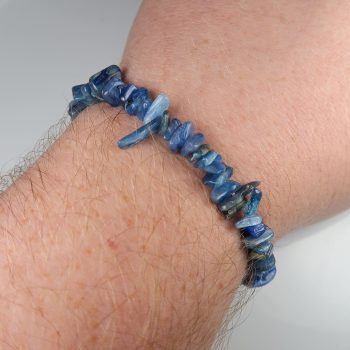
Kyanite bracelets
£5.00 -
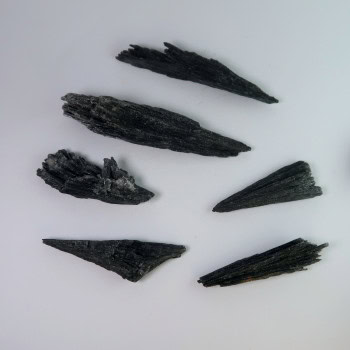
Kyanite Crystals (Black)
£0.65 – £1.00 -
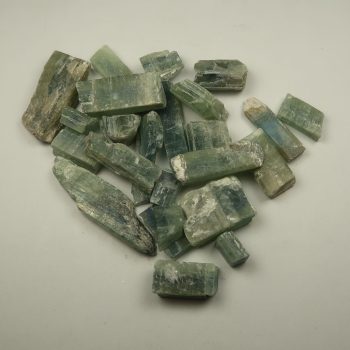
Kyanite crystals (Blue and green)
£1.50 – £3.50 -
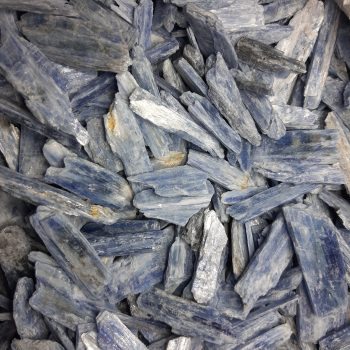
Kyanite Crystals (Blue)
£1.00 – £3.75 -
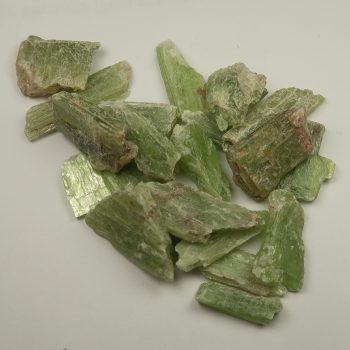
Kyanite crystals (Green)
£1.50 -
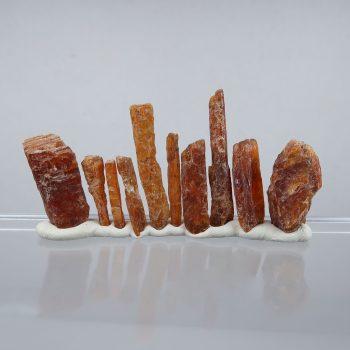
Kyanite crystals (Orange)
£1.25 – £2.95 -
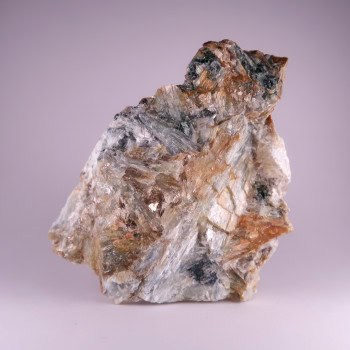
Kyanite from Craigoshina, Scotland
£20.00 -
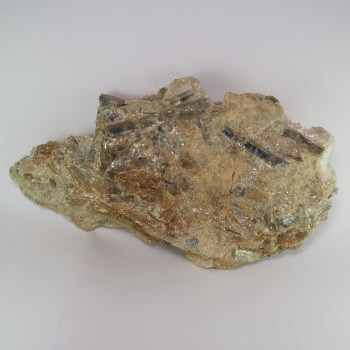
Kyanite from Varzo, Piedmont, Italy
£50.00 -
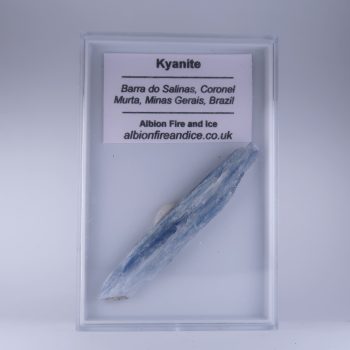
Kyanite in display box
£2.00 -
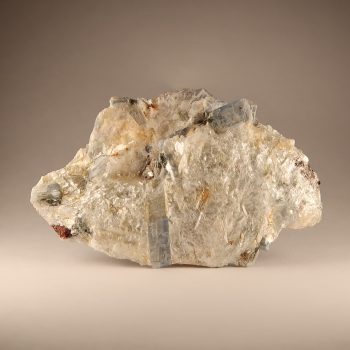
Kyanite with Staurolite specimens
£75.00
Appearance, Uses and History
Kyanite is an Aluminium Silicate mineral, which often occurs as bladed crystals.
It is primarily used in refractory products and ceramics, as well as electronics, insulators, and abrasives.
Kyanite is prized by collectors for its interesting shapes and bright colours, and it has also been used for a gemstone in the past. High-quality gemmy pieces are sometimes faceted, although it is not ideal for this usage due to its perfect cleavage – it can break easily.
Locales
Kyanite is found all around the world, including Antarctica, Argentina, Bulgaria, Canada, Czechia, France, Greece, Italy, Kenya, Norway, Romania, Russia, Spain, Switzerland, the UK, and Zimbabwe.
There are some particularly gemmy specimens found in Australia, Brazil, Nepal, Tanzania, and the USA.
Mineralogy
6.5 – 7.0 perpendicular to that axis.
Hazards and Warnings
Contains Aluminium – however, this is unlikely to be a hazard unless powdered and ingested.
Almost all rocks, minerals (and, frankly, almost all other substances on earth) can produce toxic dust when cutting, which can cause serious respiratory conditions including silicosis.
When cutting or polishing rocks, minerals, shells, etc, all work should be done wet to minimise the dust, and a suitable respirator or extraction system should be used.
Translations
Arabic:
- الكيانيت
Hindi:
Portuguese:
- cianita
Bengali:
Indonesian:
Punjabi:
English:
Italian:
- cianite
Russian:
- кианит
French:
- cyanite
Japanese:
- カイヤナイト
Spanish:
- cianita
German:
- Zyanit
Korean:
Thai:
Gujurati:
Mandarin and Traditional Chinese:
- 蓝晶石
Urdu:
